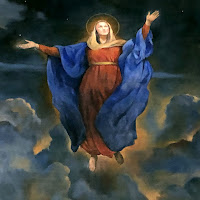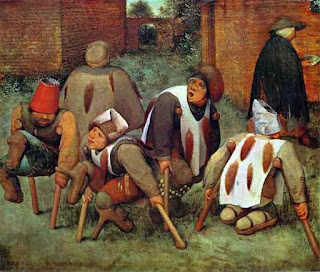The Battle of Clontarf took place on 23 April 1014. It turned Brian Boru into a national hero, although that may have had more to do with public sentiment and creative re-telling than factual outcome, since Boru did not survive.
Boru (c.941 - 23 April 1014) had grown in power until his kingdom of Munster was unparalleled in Irish history. The king of Leinster, Máel Mórda, challenged Boru at the Battle of Glenmama on 30 December 999, lost and had to submit. A few years after, in 1002, Brian Boru's political and military authority caused him to be recognized as "High King" of Ireland.
Meanwhile, Viking raids on Ireland the previous few centuries had resulted in settlements on the coast, including one that grew into the Kingdom of Dublin. At the time of Clontarf, the king of Dublin, Sitric Silkenbeard, was nephew to the king of Leinster.
They all should have been on good terms. Brian's ex-wife Gormlaith was Máel Mórda's sister, and Sitric was her son by a previous husband. One of Brian's daughters from a previous marriage, Sláine, was Sitric's wife! Unfortunately, the lust for power does not take a backseat just because of familial ties.
In 1013, Máel Mórda and Sitric Silkenbeard rebelled against Boru's authority. Boru decided he needed to make a strong statement, so he sent his son Murchad into Leinster who "plundered the land ..., burned the whole country, and took great spoils and countless captives." [Annals of Ulster]
Other skirmishes led Brian Boru to bring his army to Leinster in September 1013, where he positioned them outside Dublin. Sitric sailed east to find Viking support. According to Njal's Saga, he approached both the Earl of Orkney and a warrior from the Isle of Man and offered each to be the king of Ireland if they would aid him against Boru. (Njal's Saga is a later work of poetry and cannot always be relied on for factual details. See what it says about valkyries.)
Sitric's viking allies sailed to Dublin the week before Easter. (Easter in 1014 was 25 April, about as late as it can get, so the weather was amenable to sailing and fighting.) The armies met at Clontarf (the name means "meadow of the bull"), an area north of Dublin, on Good Friday. A blow-by-blow of the Battle of Clontarf does not exist in the contemporary Annals of Ulster or the Annals of Inisfallen, nor in the poetic Njal's Saga. The dead included Brian Boru, his son Murchad, his grandson Toirdelbach, his nephew Conaing.
On the other side, Sitric survived, because he stayed in Dublin to protect it; he could see the fighting from the city walls. His brother Amlaíb led the Leinster forces, and died because of it. Máel Mórda was killed, as were the two leaders from Orkney and the Isle of Man.
In all, estimates are that 7,000 - 10,000 were killed in the battle, but not all by bloodshed. The battle started at dawn and continued all day. The tide was in near the end of the day, preventing the retreating vikings from reaching their ships, and many drowned while trying to retreat. The viking and Dublin influence on Ireland was severely diminished.
After Boru's death, his remaining forces were led by Máel Sechnaill Mac Domnaill. He had been High King before Brian Boru, and was restored to that position after Clontarf, since Boru's male issue had been killed.
It was not called the Battle of Clontarf at the time: the 12th-century Book of Leinster has a list of kings where it states that Brian Boru died in the "Battle of Clontarf Weir." The date of the battle itself may be false, Good Friday being first mentioned in later medieval sources. There is a theory that Good Friday was chosen symbolically to link Brian Boru's death with that of Christ's sacrifice. Boru was hailed ever after as a national hero, although his victory was a pyrrhic one.
I'll talk a little more about the value of the Annals of Ulster next time.






























